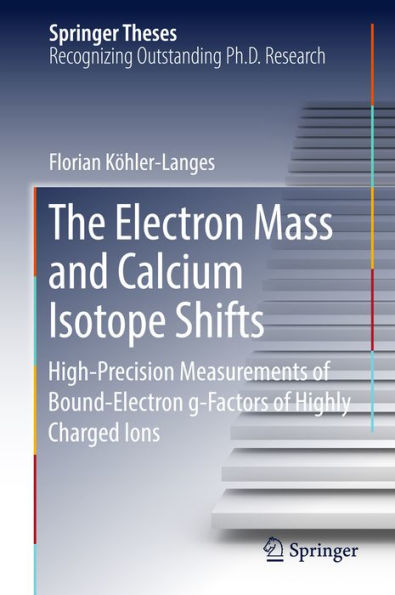This thesis presents the first isotope-shift measurement of bound-electron g-factors of highly charged ions and determines the most precise value of the electron mass in atomic mass units, which exceeds the value in the literature by a factor of 13. As the lightest fundamental massive particle, the electron is one of nature’s few central building blocks. A precise knowledge of its intrinsic properties, such as its mass, is mandatory for the most accurate tests in physics - the Quantum Electrodynamics tests that describe one of the four established fundamental interactions in the universe. The underlying measurement principle combines a high-precision measurement of the Larmor-to-cyclotron frequency ratio on a single hydrogen-like carbon ion studied in a Penning trap with very accurate calculations of the so-called bound-electron g-factor. For the isotope-shift measurement, the bound-electron g-factors of two lithium-like calcium isotopes have been measured with relative uncertainties of a few 10&hat;{-10}, constituting an as yet unrivaled level of precision for lithium-like ions.
1129870283
The Electron Mass and Calcium Isotope Shifts: High-Precision Measurements of Bound-Electron g-Factors of Highly Charged Ions
This thesis presents the first isotope-shift measurement of bound-electron g-factors of highly charged ions and determines the most precise value of the electron mass in atomic mass units, which exceeds the value in the literature by a factor of 13. As the lightest fundamental massive particle, the electron is one of nature’s few central building blocks. A precise knowledge of its intrinsic properties, such as its mass, is mandatory for the most accurate tests in physics - the Quantum Electrodynamics tests that describe one of the four established fundamental interactions in the universe. The underlying measurement principle combines a high-precision measurement of the Larmor-to-cyclotron frequency ratio on a single hydrogen-like carbon ion studied in a Penning trap with very accurate calculations of the so-called bound-electron g-factor. For the isotope-shift measurement, the bound-electron g-factors of two lithium-like calcium isotopes have been measured with relative uncertainties of a few 10&hat;{-10}, constituting an as yet unrivaled level of precision for lithium-like ions.
81.99
In Stock
5
1

The Electron Mass and Calcium Isotope Shifts: High-Precision Measurements of Bound-Electron g-Factors of Highly Charged Ions
168
The Electron Mass and Calcium Isotope Shifts: High-Precision Measurements of Bound-Electron g-Factors of Highly Charged Ions
168eBook (1st ed. 2017)
$81.99
$109.00
Save 25%
Current price is $81.99, Original price is $109. You Save 25%.
Related collections and offers
81.99
In Stock

Product Details
| ISBN-13: | 9783319508771 |
|---|---|
| Publisher: | Springer-Verlag New York, LLC |
| Publication date: | 01/03/2017 |
| Series: | Springer Theses |
| Sold by: | Barnes & Noble |
| Format: | eBook |
| Pages: | 168 |
| File size: | 5 MB |
About the Author
From the B&N Reads Blog
